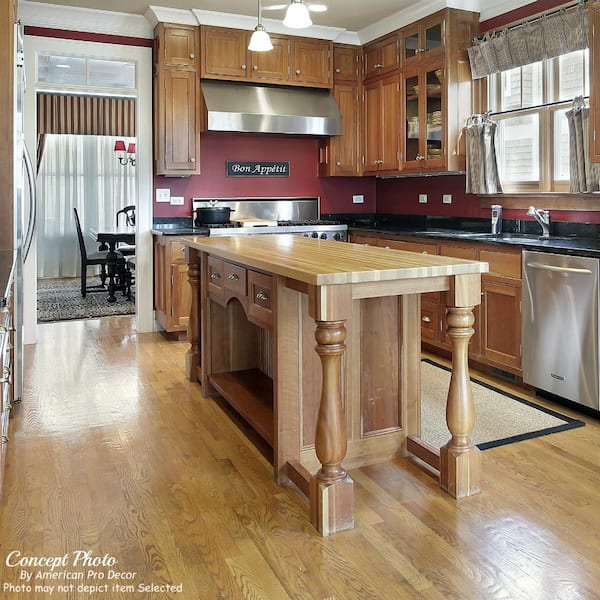Explore Timeless Options in Standard Legs For Kitchen Island Styles
Explore Timeless Options in Standard Legs For Kitchen Island Styles
Blog Article
Essential Variables to Take Into Consideration When Picking Legs For Kitchen Area Island
Choosing the suitable legs for a kitchen island entails a mindful evaluation of several elements that can considerably influence both capability and aesthetic appeal. Amongst these, the option of material plays a pivotal duty in making certain longevity, while the style should enhance the existing decoration. Factors to consider such as height and weight assistance are important for security and comfort. As we discover these aspects, it comes to be clear that each decision can have far-reaching ramifications for the overall kitchen area experience. What nuances should be thought about in each of these categories to accomplish the ideal equilibrium?
Product Options
When picking legs for a kitchen island, comprehending the numerous material options is necessary for achieving both aesthetic charm and architectural honesty (Legs For Kitchen Island). The choice of material considerably affects not just the durability of the island however additionally its general style and performance
Metal legs, frequently made from stainless steel or wrought iron, add a contemporary and commercial feeling while making sure sturdiness and security. These products are resistant to use and can support significant weight, making them suitable for larger islands.
An additional choice is crafted products, like MDF or plywood, which can be extra cost-effective while still supplying a variety of coatings. Nevertheless, they might not give the same degree of security as solid timber or steel. Finally, products such as acrylic or glass can develop a modern appearance, though they might require extra support to make certain security.
Inevitably, the choice of material for kitchen island legs need to line up with the preferred functionality and the overall theme of the cooking area.
Design and Layout
:max_bytes(150000):strip_icc()/pink-marble-tile_House-of-Harvee-9f030193ae38484a9cb7ea2d71af66f4.jpg)
When taking into consideration style, the form and finish of the legs are critical. Tapered legs can provide a feeling of agility and beauty, while thicker, more robust legs can share toughness and security. Additionally, the surface-- be it painted, discolored, or natural-- should complement the cabinets and countertop materials to create a unified appearance.
Additionally, the layout of the legs can additionally reflect personal taste. Customized or decorative legs, such as those featuring detailed makings or distinct geometric shapes, can work as focal factors, adding character and personality to the cooking area. Eventually, the ideal selection will certainly not just enhance capability yet also boost the visual allure, making the kitchen area island a standout function of the home.
Height Factors To Consider
Picking the appropriate elevation for cooking area island legs is essential, as it straight influences both functionality and comfort. The basic height for a kitchen island generally varies from 36 to 42 inches, straightening with typical kitchen counter elevations.

It is additionally vital to make up individuals' elevations and preferences. Tailoring the elevation can ensure a comfortable experience for all household members, making the kitchen island a much more delightful and practical space.
Weight Assistance
Ensuring ample weight assistance for kitchen island legs is important for both safety and functionality. The kitchen area island usually offers multiple functions, including cooking, dining, and extra storage, requiring a robust support structure. When choosing legs, it is critical to think about the general weight ability needed based on the island's intended use and the materials that will be put on it.
The option of material for the legs plays a significant duty in their weight-bearing capacities. Strong wood, steel, and heavy-duty compounds typically offer remarkable toughness contrasted to lighter products. In addition, the design of the legs-- whether they are directly, tapered, or have a pedestal form-- can affect their capacity to disperse weight effectively throughout the structure.
Always consult the supplier's specs pertaining to load restrictions to make sure that the legs can sustain the desired weight without compromising security. In summary, picking kitchen island legs with sufficient weight assistance is necessary for developing a safe and practical cooking area.
Setup and Upkeep
Appropriate installation and maintenance of kitchen area island legs are essential for guaranteeing durability and stability. This usually involves securing the legs to the island base utilizing suitable bolts, guaranteeing that the legs are degree and straightened.
Once mounted, regular upkeep is necessary to maintain the integrity and appearance of the legs - Legs For Kitchen Island. For wooden legs, periodic cleaning with a wet cloth and application of ideal wood polish can avoid dampness damages and maintain their coating. Steel legs might need a gentle cleansing solution to remove grease and crud, followed by a dry towel to stop rust formation
In addition, examine the legs regularly for indicators of wear or damage, such as cracks or loose joints. Tightening screws or bolts as required can also lengthen the life-span of the legs. By adhering to these installation and maintenance techniques, homeowners can make sure that their kitchen area island continues to be tough and visually appealing for several years ahead.
Final Thought

Aesthetic coherence is critical in picking the design and design of legs for a cooking area island, as these elements significantly influence the general atmosphere of the area. Tapered legs can supply a feeling of lightness and style, while thicker, much more robust legs can share stamina and stability.Picking the suitable height for cooking area island legs is important, as it straight impacts both functionality and comfort. In summary, picking kitchen island legs with adequate weight assistance is crucial for creating a secure and useful culinary room.
In final thought, choosing legs for a kitchen area island demands careful factor to consider of various variables, consisting of material options, style, elevation, click for more weight assistance, and setup.
Report this page